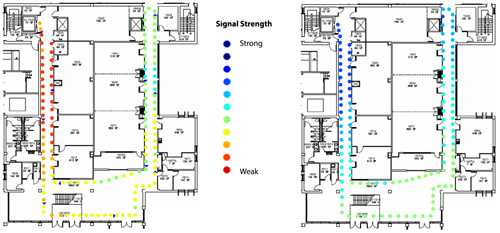Newsroom
Use the filters below to narrow publications by offices, programs or categories
Ten years ago, one of the deadliest hurricanes in history struck the Gulf Coast, decimating coastal cities and communities from Gulfport, Miss., to New Orleans. At the time, the National Weather Service (NWS), an agency of the U.S. Commerce Department’s National Oceanic and Atmospheric Administration (NOAA), accurately forecasted more than two days ahead of time that the central Gulf Coast would be directly impacted by Hurricane Katrina.
The Internet’s global multistakeholder community has made tremendous progress in its work to develop a proposal to transition the historic stewardship role NTIA has played related to Internet’s domain name system (DNS).
The Institute for Telecommunication Sciences (ITS), NTIA’s research and engineering laboratory in Boulder, Colo., provides critical support to NTIA and other agencies by performing basic and applied research in radio science—which enables every wireless communications device, from smart phones, to military radars, to space satellites to operate.
Nearly 17 months ago, NTIA kicked off activities to complete the privatization of the Internet Domain Name System (DNS) as promised in 1998 by transitioning our stewardship role over certain technical functions related to the DNS.
We have reached an important milestone in that process as the two working groups tasked with developing proposals related to the transition have released them for final comment.
This post is part of our “Spotlight on NTIA” blog series, which is highlighting the work that NTIA employees are doing to advance NTIA’s mission of promoting broadband adoption, finding spectrum to meet the growing demand for wireless technologies, and ensuring the Internet remains an engine for innovation and economic growth.
In recent days, there has been a great deal of discussion about how much spectrum federal agencies use and whether that spectrum is being used efficiently. This is an important conversation to have and one that goes to the heart of NTIA’s statutory mission of fostering full and efficient use of the nation’s spectrum resources in a manner that most benefits the public interest. If we are to make progress toward a more efficient use of spectrum, it is also essential that this discussion include a full and balanced assessment of the challenges and trade-offs that must be addressed.
On Wednesday, President Obama travelled to Durant, Oklahoma, where he announced ConnectHome — a plan to bring high-speed broadband Internet to low-income housing in 27 cities and one Native American tribal community. ConnectHome is just one component of a broader Administration initiative to expand broadband and close the digital divide, and NTIA is playing a critical role in that effort.
Unmanned aircraft systems (UAS) have the potential to provide a wide range of innovative and beneficial services to businesses and consumers in the United States. From enhancing news gathering, improving agribusiness, providing new delivery models, to providing Internet in remote areas, the possibilities for UAS are staggering. Consumer trust and responsible operation are keys to fully tapping the transformative potential of unmanned aircraft.
Promoting and preserving the digital ecosystem is a core mission of the Department of Commerce, and the security and resiliency of that ecosystem is vital. For the digital economy to thrive, users must trust that their personal data and the systems and websites they use every day are as secure as possible.
Recognizing the growing importance of wireless broadband to the U.S. economy, President Obama five years ago last week set a bold new goal aimed at ensuring that enough spectrum is available to meet the surging demand for wireless connectivity.
This post is part of our “Spotlight on NTIA” blog series, which is highlighting the work that NTIA employees are doing to advance NTIA’s mission of promoting broadband adoption, finding spectrum to meet the growing demand for wireless technologies, and ensuring the Internet remains an engine for innovation and economic growth.
Today, the National Telecommunications and Information Administration (NTIA) released an important technical report developed by engineers in NTIA’s Office of Spectrum Management (OSM) and Institute for Telecommunication Sciences (ITS) that provides the technical analysis supporting spectrum sharing in the 3550-3650 MHz band. It serves as a concrete example of our efforts to make more spectrum available to meet the exploding demand for commercial wireless broadband while protecting mission-critical Federal systems.&
Next week, hundreds of members of the Internet stakeholder community will attend the Internet Corporation for Assigned Names and Numbers’ (ICANN) 53rd meeting in Argentina. As I head to Buenos Aires, one of NTIA’s top priorities continues to be the transition of NTIA’s role related to the Internet Domain Name System. Since we announced the IANA stewardship transition in March 2014, the response of the stakeholder community has been remarkable and inspiring.
This post is part of our “Spotlight on NTIA” blog series, which is highlighting the work that NTIA employees are doing to advance NTIA’s mission of promoting broadband adoption, finding spectrum to meet the growing demand for wireless technologies, and ensuring the Internet remains an engine for innovation and economic growth.
 Yesterday, I had the great opportunity to speak at the United States Telecommunications Training Institute (USTTI) to a group of foreign government officials focused on Internet and cybersecurity issues. My talk focused on how NTIA sees the role of the Internet in the U.S. economy, and what key policies have contributed to the strength of the U.S. Internet economy.
Yesterday, I had the great opportunity to speak at the United States Telecommunications Training Institute (USTTI) to a group of foreign government officials focused on Internet and cybersecurity issues. My talk focused on how NTIA sees the role of the Internet in the U.S. economy, and what key policies have contributed to the strength of the U.S. Internet economy.
As we explore a bold new world of sharing spectrum across government and commercial users, NTIA is continuing the conversation about how to make this vision a reality.
In an important step toward meeting President Obama’s goal of making 500 megahertz of spectrum available for mobile broadband by 2020, the Federal Communications Commission (FCC) today approved an innovative regulatory framework that will enable access to 100 megahertz of spectrum in the 3550-3650 MHz (3.5 GHz) band.
The Federal Government uses the 2900 - 3100 MHz band of spectrum for operating various types of radar systems that are used for safe and reliable maritime navigation and accurate weather monitoring.
Over the past five years through our national broadband grant program, NTIA has seen first-hand the economic and societal impact that broadband has on communities across the country. At the Broadband Communities conference in Austin, Texas this week, NTIA’s BroadbandUSA team will share our plans to leverage that expertise by providing communities with technical assistance and field-tested ideas. I will be speaking along with my NTIA colleagues Doug Kinkoph and Anne Neville.
This blog is cross posted on the U.S. Department of Commerce’s blog
At the U.S. Department of Commerce, we have witnessed first-hand the power of broadband to drive economic growth and innovation, open up new employment opportunities for Americans across the income spectrum and expand access to everything from education to healthcare to government services.
When NTIA launched the National Broadband Map in 2011, American consumers and businesses had few places to turn to when trying to determine who offered broadband in their communities. The National Broadband Map has not only filled that void but has helped detail the evolution of broadband in the United States as providers upgrade or expand their networks to meet the growing demand for faster broadband.
This post is part of our “Spotlight on NTIA” blog series, which is highlighting the work that NTIA employees are doing to advance NTIA’s mission of promoting broadband adoption, finding spectrum to meet the growing demand for wireless technologies, and ensuring the Internet remains an engine for innovation and economic growth.
Chris Hemmerlein says he feels fortunate to have a job that he enjoys so much. Hemmerlein, a telecommunications policy specialist in the Office of International Affairs, handles Asia- and United Nations-related issues for NTIA.
Last week, the Internet Corporation for Assigned Names and Numbers (ICANN) held its 52nd meeting in Singapore, where the global multistakeholder community continued progress on a proposal to transition the United States role related to the Internet Domain Name System.
The National Telecommunications and Information Administration’s BroadbandUSA team convened a productive workshop in Jackson, Miss., last week to explore ways to close the digital divide in a state that continues to expand broadband connectivity and adoption.
The event was the second in a series of regional workshops that NTIA is hosting across the country as part of its new BroadbandUSA program, which is helping communities improve local broadband capacity and utilization.

